Oktoberfest, the biggest folk festival on the planet, is a lively event rooted in Bavarian life. It is much more than a beer party. It blends history, community, and long-held customs, drawing millions to Munich each year. From its royal start to the parades, traditional dress, and special beers, Oktoberfest gives a clear look at German culture. This article explains the main traditions behind the festival, how it grew, the foods and music you’ll find, and the spirit that keeps it going today.
What is Oktoberfest and Why Is It Celebrated?
Oktoberfest is known worldwide and brings about six million visitors each year to the Theresienwiese in Munich, Germany. It celebrates German food, music, and beer, even though the very first event did not center on beer. It usually starts in mid-September and ends on the first Sunday in October. The festival highlights Bavarian customs, local pride, and a strong sense of togetherness.
Many think of it as a German national festival, but it began in Bavaria, the southeast state of Germany. Not all Germans take part, but for Bavarians it is a beloved event that honors local roots and offers a welcome break from routine, bringing people together-locals and visitors alike.
Origins of Oktoberfest: The Royal Wedding of 1810
Oktoberfest began with a royal wedding: Crown Prince Ludwig of Bavaria (later King Ludwig I) married Princess Therese of Saxe-Hildburghausen on October 12, 1810. Munich’s citizens were invited to celebrate with a big feast and a horse race on a meadow outside the city.
The idea for a public party with a horse race came from Andreas Michael Dall’Armi, a middle-class officer in the Bavarian National Guard. He suggested it to King Max I Joseph, who liked the plan. The celebrations ended on October 17 with the race. In honor of the bride, the meadow was named “Theresens-Wiese,” now “Theresienwiese,” or simply “the Wiesn.” There were no beer tents or rides at that first event, but it planted the seed for the festival we know today.

How Oktoberfest Grew into a Bavarian Tradition
The wedding party was such a hit that Munich decided to repeat it. In 1811, with the wedding behind them, the ‘Landwirtschaftlicher Verein in Bayern’ (Bavarian agricultural association) took over and added an agricultural fair to support Bavaria’s farm economy. Horse races continued, and the fair helped tie the event to everyday community life.
Over time, the festival changed a lot. The horse races slowly stopped, but the agricultural show still happens every four years. In 1819, the city of Munich took charge to keep the event running each year. New attractions like swings, slides, and booths made it family-friendly. In the late 1800s, electricity brought bright lights to carousels and stalls. As demand grew, breweries replaced small stands with large beer tents and live bands, shaping the modern Oktoberfest. The start moved to September for better weather, but it still ends in early October.
Oktoberfest Traditions Explained
Oktoberfest is built on many customs, old and new, that create its special feel. Knowing these traditions turns a visit into more than drinking beer; it becomes a simple way to learn about Bavarian culture.
From the first keg tapping to parades, beer styles, and dress, every part plays a key role. Even what people wear has meaning and shows pride in local roots. Here are the core traditions that make Oktoberfest what it is.
Opening Ceremony: The Tapping of the First Keg (O’zapft is!)
The festival begins with the tapping of the first keg in the Schottenhamel tent, the longtime site of this ceremony. This custom started in 1950 when Munich’s mayor Thomas Wimmer tapped the first barrel.
Today, Munich’s Lord Mayor hammers the tap into the barrel. When the beer flows, the mayor calls out “O’zapft is!” (“It is tapped!”). Then twelve gunshots from the Ruhmeshalle staircase signal that all tents may start serving. The first liter goes to the Bavarian Minister-President. Many visitors enjoy counting the hammer blows: Christian Ude and Dieter Reiter managed it with two strikes, while Thomas Wimmer needed 17 in 1950, which remains the record for the hardest tapping.
Traditional Bavarian Attire: Dirndl and Lederhosen
Tracht-traditional Bavarian clothing-adds color and pride to the festival. Men wear Lederhosen, leather shorts with suspenders, often with a checkered shirt. This style comes from centuries of alpine farm life.
Women wear the Dirndl, a fitted bodice, skirt, and apron. The apron bow has meaning: tied left means single, right means taken, center means virginity, and back means widowed. These outfits are more than costumes; they are a living part of the culture, and many guests and locals enjoy wearing them.

The Parade of Costumes and Riflemen
The Trachten- und Schützenzug (Costume and Riflemen’s Procession) is a major highlight on the first Sunday. Revived in 1950, it is often called the biggest traditional costume parade in the world and shows the wide range of regional styles.
About 8,000 people march seven kilometers from the Maximilianeum to the festival grounds. The Münchner Kindl, Munich’s symbol, leads the way, followed by city and state leaders, often including the minister-president. The parade features costume and rifle clubs, bands, flag wavers, and around 40 decorated brewery wagons and carriages. While most groups come from Bavaria, others join from across Germany, Austria, Switzerland, Northern Italy, and more parts of Europe.
Wiesn Landlords’ Beer Tents and Breweries
The main action happens in the big beer tents. There are 14 large tents, each run with a Munich brewery’s beer and identity. Some hold up to 10,000 people. These are not simple shelters; they are full-scale halls with their own look, music, and menu.
The link between landlords and breweries dates to 1887, when Hans Steyrer marched with his team, brass band, and beer to the Wiesn. By 1935, all major breweries joined the opening parade. Well-known tents include Hofbräu-Festzelt (Hofbräuhaus) and Augustiner-Festhalle, which still pours from wooden barrels. The Schottenhamel tent hosts the first keg tapping. These tents are the center of food, music, and friendly service.

Oide Wiesn: Celebrating Old Munich Traditions
If you want a calmer, old-style experience, visit the Oide Wiesn (Old Wiesn). It began in 2010 for the 200th anniversary and sits on the south side of Theresienwiese, often behind the Ferris wheel. It became an instant favorite, especially with locals, and returns each year except when the agricultural fair takes place.
Oide Wiesn offers three extra large tents and historic rides, along with family shows and horse racing that echo the early days. Traditional brass bands and classic attractions bring back the feel of older Munich, keeping long-standing customs alive for new generations.
Showmen, Carnival Rides, and Festive Amusements
Beyond the beer tents, the grounds are packed with rides and games. Showmen have been part of the Wiesn since 1818, first with a carousel and two swings. In the late 1800s, the fairground scene grew fast, setting the stage for today’s wide mix of attractions.
There are about 80 rides and shows, from roller coasters and bumper cars to swings and the Ferris wheel, which offers views of the Alps on clear days. Historic rides like the Krinoline (1924) play live brass music, and the Teufelsrad (Devil’s Wheel) challenges riders to stay on a spinning disk. The Schichtl theatre, dating to 1867, remains a classic with its parade and quirky performances. Whether you like thrills or old-time charm, there is always something to try.
What Makes Oktoberfest Beer Unique?
Oktoberfest beer is carefully brewed with long-standing methods and clear rules. This focus on quality and tradition sets it apart and makes it a central part of the event.
Its character comes from strict brewing laws, local production, and styles that have developed over centuries. Every liter carries a taste of Bavarian history.
Official Munich Breweries and Their Role
Only six Munich breweries may serve beer at the official Oktoberfest: Augustiner-Bräu, Hacker-Pschorr-Bräu, Löwenbräu, Paulaner, Spatenbräu, and Staatliches Hofbräu-München. Together they form the Club of Munich Brewers and keep long-held standards of quality and tradition.
Each year they brew special beers for the festival, so the taste can change slightly from year to year. Their names appear on the big tents, linking the beer firmly to the place and its story.
| Brewery | Famous tent/example | Notes |
|---|---|---|
| Augustiner-Bräu | Augustiner-Festhalle | Serves from wooden barrels |
| Hacker-Pschorr-Bräu | Hacker-Festzelt | Known for malt-forward Märzen |
| Löwenbräu | Löwenbräu-Festzelt | Lion mascot over the tent |
| Paulaner | Winzerer Fähndl | Large beer tower landmark |
| Spatenbräu | Ochsenbraterei | Ox roast specialty |
| Staatliches Hofbräu-München | Hofbräu-Festzelt | One of the most famous tents |
Traditional Beer Styles and Serving Customs
Oktoberfest beer follows classic styles and brewing laws. The main styles are Märzen and Festbier. These beers are stronger and maltier than many regular lagers, usually around 5.8% to 6.3% alcohol. Märzen is bottom-fermented and smooth, and some brewers like Augustiner still use wooden barrels to give added depth.
All beer must be brewed within Munich and follow the Reinheitsgebot (German Beer Purity Law) from 1516, which allows only water, hops, barley, malt, and yeast. Stone mugs gave way to glass in 1892, letting drinkers see the beer’s color. Beer is served in one-liter steins called a “Maß.” You will often hear “Eine Maß, bitte” in the tents.
Food Traditions at Oktoberfest
Beer shares the stage with hearty Bavarian food. Classic dishes match the rich flavors of the beers and add to the festive mood. It is a simple, satisfying food culture built for long tables and long talks.
From roast meats to pastries, foods are made to share and to keep you going through hours of music and singing. Trying these dishes is as much a part of the visit as the beer.
Classic Bavarian Dishes to Expect
Tables fill with well-loved Bavarian plates:
- Hendl: whole roast chicken, crispy and seasoned (a Wiesn staple since 1881).
- Schweinshaxe: pork knuckle with crunchy skin and tender meat inside.
- Bratwurst: grilled sausage, often served with sauerkraut and mustard.
- Kartoffelsalat: potato salad with a tangy vinegar dressing.
- Obatzda: cheese spread (camembert, butter, paprika), great with big pretzels (Brezn).
- Apfelstrudel: warm apple pastry, often with vanilla sauce.

Beer and Food Pairings
Märzen and Festbier go well with rich, savory dishes. The crisp, lightly sweet Hofbräu Oktoberfestbier cuts through roast chicken (Hendl). Paulaner Oktoberfest Märzen, with toasty malt, pairs nicely with pork knuckle (Schweinshaxe), as the malt sweetness balances the meat. Spaten Oktoberfestbier works with many plates, including Bratwurst and sauerkraut. Hacker-Pschorr Oktoberfest Märzen, with caramel and bread notes, matches Obatzda and pretzels. The higher strength and full flavor of these beers stand up to the bold food and bring out the taste of each bite.
Music, Dancing, and Festival Activities
Music is everywhere at Oktoberfest. Brass bands and singalongs keep the energy high and invite everyone to join in. This soundscape helps turn each tent into a party.
On top of the music, you’ll find games and friendly contests that add to the fun and bring people together. It all makes for a lively and memorable visit.
Brass Bands and Bavarian Folk Music
Every big tent has a brass band that plays through the day. Since 2005, to keep the daytime family-friendly, tents play mostly Bavarian brass band music until 6 p.m.
Bands perform folk tunes, marches, and polkas that invite clapping, singing, and dancing. A special moment comes on the second Sunday when all tent bands gather at the Bavaria statue for a joint concert, often led by the mayor. You might spot local celebrities there and watch hundreds of balloons rise afterward.
Popular Oktoberfest Dances and Songs
Some songs are part of the festival’s rhythm. “Ein Prosit” is the short toast song played again and again, with the line “Ein Prosit der Gemütlichkeit.” Everyone raises their steins and calls “Prost!”
You’ll also hear German classics, American oldies, and even disco-style hits. John Denver’s “Country Roads” is a crowd favorite, and “Fliegerlied” comes with easy moves that have everyone flapping their arms like a chicken. These shared songs and dances help strangers feel like friends.
Traditional Games and Contests (e.g., Stein Holding, Chicken Dance)
There are many ways to join the fun. The Stein Holding Contest (Masskrugstemmen) challenges players to hold a full liter stein at arm’s length without bending the elbow. Most last 3-5 minutes, but seasoned pros can pass 10, cheered on by the crowd.
In Hammerschlagen, you try to hammer a nail into a log using the thin end of the hammer. And of course, the “Chicken Dance” (often tied to “Fliegerlied”) gets everyone moving and laughing. These lighthearted contests add to the friendly mood of the Wiesn.
Frequently Asked Questions about Oktoberfest Traditions
Oktoberfest’s long history and many customs often lead to questions, especially for first-time visitors. Clear answers help remove confusion and show what makes this festival special.
Here are common questions and practical tips that help you get the most out of your visit.
Is Oktoberfest Only About Beer?
No. Beer is a big part of it, but the festival also celebrates Bavarian food, music, dress, and community. It is the largest folk festival on earth, with more to see and do than drink.
Beyond the six Munich breweries and their beers, there are food stands, about eighty rides, open-air shows, parades, and vendor tents. You will find church services, games, and plenty of folk music and dancing. Non-alcoholic drinks like Apfelschorle and soft drinks are easy to find in the tents, and wine and spirits are also available. Families come too, and many activities are set up with them in mind.
Can You Experience Oktoberfest Traditions Outside Munich?
Yes. While Munich is the original and most authentic place, many cities hold their own Oktoberfest-style events. You can find them across Europe-in Frankfurt, Stuttgart, Copenhagen, London, Paris, and Manchester-and in the USA, Brazil, and parts of Asia.
These events often feature German beer, bratwurst, pretzels, music, and sometimes people wearing Dirndl and Lederhosen. They may be smaller or different in feel, but they offer a taste of Bavarian fest culture and bring people together.
What Are Common Etiquette Rules at Oktoberfest?
Getting around Oktoberfest can feel a bit hard the first time. A few simple habits help make the day smooth:
- Share tables politely. You’ll often sit with strangers-say hello and enjoy the chat.
- Tip your server. Plan for 5-10% (often one or two Euros per beer).
- Carry cash. Big tents mostly take cash. Some rides take cards, but many do not.
- Avoid fairground ATMs. Fees can be high-bring Euros with you.
- Drink water sometimes. Mix in water or soft drinks to stay fresh.
- Quiet hours. Expect traditional brass music until 6 p.m.; party hits come later.
- Enjoy the spirit of “Gemütlichkeit”: warmth, good cheer, and belonging.
Preserving and Adapting Oktoberfest Traditions Today
Oktoberfest is over 200 years old and keeps changing while holding on to its core. That balance-keeping what matters and updating what needs to change-helps it stay popular and true to itself.
Munich and the festival team work to keep Oktoberfest lively and welcoming, adding new ideas carefully while protecting what makes it special.
Modern Changes and New Customs
Recent updates aim to make the visit better and more family-friendly. In 2005, the “quiet Oktoberfest” started: tents play mainly brass band music until 6 p.m., with party music later. Daytime stays calmer and suits families and older guests.
The schedule changed after 1990 to include German Unity Day (October 3). If the first day in October is a Sunday, the festival runs 17 days. If the first Sunday in October falls on the 2nd, it runs 18 days. Music in tents now mixes German hits, American oldies, disco-style songs, and folk tunes. Some rides accept credit cards now, but cash still rules in most tents.
How Oktoberfest Maintains Authenticity
Oktoberfest keeps its roots by sticking to key rules and rituals. All beer follows the Reinheitsgebot, and only six Munich breweries serve at the event. This anchors the festival in local brewing and quality.
The mayor’s first keg tapping, the costume and riflemen’s parade, and Tracht (Dirndl and Lederhosen) link today’s festival to its past. The Oide Wiesn, started in 2010, protects older styles of music, rides, and shows. With these choices-and a strong focus on community and shared joy-Oktoberfest stays true to Bavarian culture rather than becoming just another commercial fair.
Prost to Tradition: The Lasting Legacy of Oktoberfest
Raising a stein at Oktoberfest is a salute to Bavarian culture and staying power. From a royal wedding in 1810 to the largest folk festival in the world, it has lived through wars, epidemics, and hard times and still draws millions each year. Records for beer and roast chicken come and go, but the pull of the Wiesn remains.
The 190th Munich Oktoberfest, set for September 20 to October 5, 2025, will add another chapter. The festival reaches far beyond Theresienwiese, inspiring similar events around the globe and showing how beer garden culture brings people together. Friends and strangers sit side by side, share a drink and a song, and feel the warmth of German hospitality. Whether you plan to visit Munich or celebrate at home, remember: Oktoberfest is more than a party-it is a living tradition. Prost!


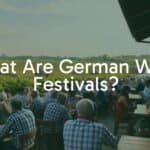
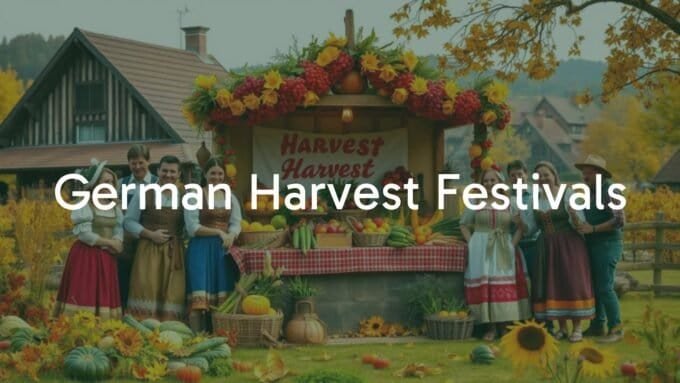
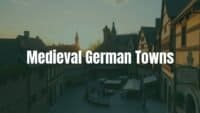

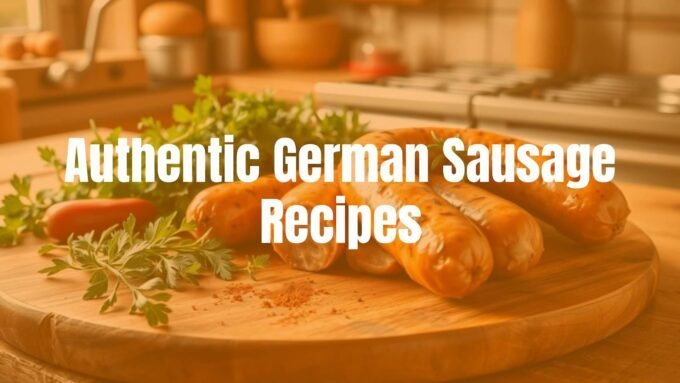



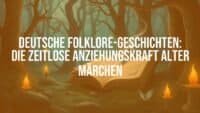
Leave a comment